The idea of a circular economy is becoming increasingly well known. But what is it really about?
We come from a linear economy: the production model consists of extracting resources, producing goods, and disposing of waste. The life cycle of products is programmed to be short, so that consumers use, throw away, and rebuy new products.
The problem with this method of production and consumption is that it is not sustainable, neither for the environment nor for people’s well-being.
The circular economy responds to a different logic: it uses nature as an example. Nature does not generate waste, and everything generated is reused and has a role to play.
From the design stage of the products, they are intended to have a longer life cycle, trying to take advantage of their value for a longer period of time. The use of biodegradable materials is prioritized. When the use of unrecyclable materials is necessary, the aim is that this unavoidable waste is used as raw material to make other products. It is not about using and throwing away, but of reducing, reusing, and recycling.
The circular economy drives sustainable development.
One of the key points of the circular economy is waste management.
In Argentina, one ton of waste is generated every two seconds (Ministry of Environment and Sustainable Development)
Below, we present 3 Argentine projects created by entrepreneurs from the Mayma community that are examples of circular economy and that actively contribute to transforming the current reality.
Papel Mineral is a paper made from ground limestone that is discarded from mining, along with a small portion of high-density polyethylene.
This paper is washable and waterproof and is not only a substitute for conventional paper but can also replace plasticised paper and plastic.
It can be used to manufacture brochures, notebooks, sheets, containers, cards, among many others.
In addition to taking advantage of mining waste, it is a natural resource-friendly alternative since it does not involve the consumption of trees or water, uses less energy, and is recyclable.
WarmGood is a vegetable log made from the discarded apple of the cider industry.
This log replaces wood and coal, which are used both to heat homes and to cook without natural gas.
Vegetable wood is very easy to light. It does not produce smoke or smell. The absence of smoke improves families’ respiratory health.
For every 500 gr. of vegetable residue fuel, 1 tree is saved from being cut down.
WarmGood has already produced over 100 tonnes of vegetable logs, which means 200 trees have been saved.
Ondulé develops children’s creativity using toys made from recycled cardboard, thus reducing waste production.
In addition to environmental protection, Ondulé seeks to provide better working conditions for urban recyclers -also known as cartoneros-, who are not only responsible for treating the waste generated but are also part of the value chain by taking charge of supplying cardboard and packaging the finished products.
Finally, the waste cardboard created in the process of manufacturing toys is donated to said cooperatives for sale.
They have manufactured more than 120,000 toys, 67,000 Kg of recycled material, 56,426 Kg of mitigated CO2, and the integration of 2 work cooperatives in the value chain.
CAECUS lab developed Anny, smart glasses made of reused and recycled technology (cell phones, tablets, notebooks, pc).
In Argentina, 10 million cell phones are discarded every year and only 2% of them are recycled. This initiative provides a second opportunity to discard technology.
Anny are lenses that seek to improve the autonomy and therefore the quality of life of people with visual disabilities.
With artificial intelligence (AI), Anny uses voice to describe the texts and objects that are in an image, facilitating the interaction of the person with the environment.
It can detect objects from the waist up to prevent injury.
It also has an accessible GPS that tells the person where they are at any given time.
It provides the chance of communicating with a family member to solve together and remotely any challenge that may arise.
Finally, it is collaborative, that is, different users in the community can share useful information about recommended and non-recommended places, providing mutual value.


